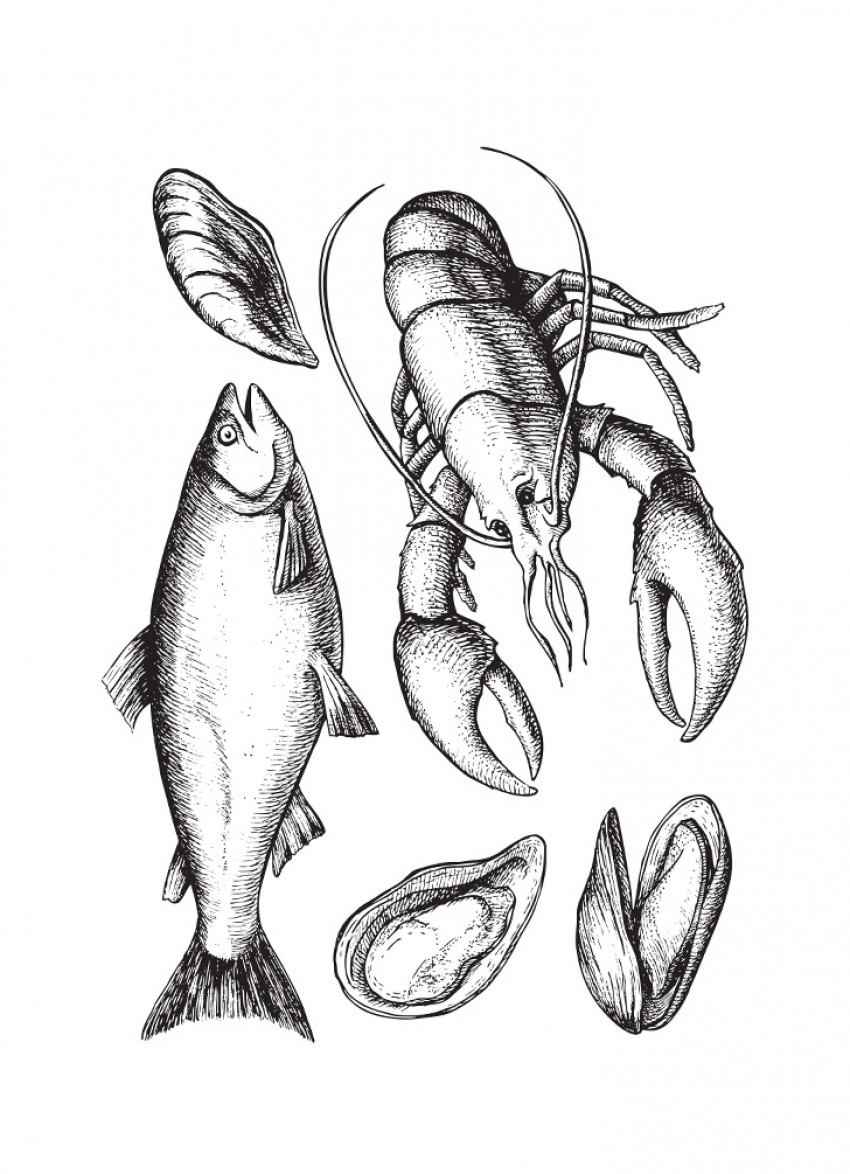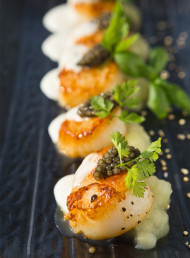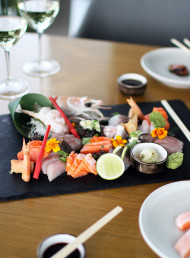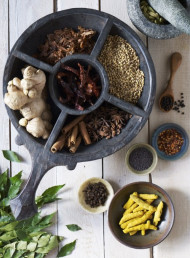A guide to: shellfish

We have a bounty of shellfish in New Zealand, Sarah La Touche looks at what’s on offer…
Summer is a time for seafood – fresh fish pulled from the depths; cockles, pipi, and tuatua foraged from the water’s edge.
Not all of us have time for such agreeable pleasures these days, but with a significant percentage of our native shellfish produced through sustainable aquaculture, a trip to the local fish market or fish shop is a feast for choice. But, as with other food, shellfish is seasonal – the chilly winter, nutrient-rich waters deliver plump Bluff oysters from Foveaux Strait; spring hails the opening of the scallop season; paua, mussels, cockles, pipi and tuatua are synonymous with summertime; and in autumn the kina roe is at its best.
1. Cockles
Also known as little neck clams, tuaki or taungi, are bivalve molluscs, with almost heart-shaped shells that enclose muscular little bodies. These heavily ribbed shells, which help stabilize them in the sand, are greyish to rust-brown and often a distinct purple inside.
While many cockle varieties are found the world over, this filter-feeding variety (Austrovenus stutchburyi) is native to our waters where it thrives on microscopic algae in intertidal sheltered bays and harbours. In recent years these tasty creatures have developed into a lucrative commercial harvest gathered mainly from Snake Bay in Whangarei Harbour, Tasman Bay, and the Papanui and Waitaki Inlets around the Otago Peninsula. These are the cockles you’ll enjoy in restaurants. Other varieties, like the common surf clam, can sometimes be found co-habiting with pipi on surf beaches.
Cockles’ meat is succulent, sweet and nutty. The famous Italian dish ‘Spaghetti alle Vongole’ is a perfect way to eat them. They make delicious fritters and chowders, and are superb added to risotto, paella or creamy tarts. Add to a seafood soup or stew along with other shellfish and fish. Cockles marry naturally with chilli, saffron, white wine, garlic and fresh herbs.
When gathering your own cockles, low- to mid-tide is a good time, and keep them in a bucket of seawater overnight so they can spit out any excess sand before you consume them. The simplest way to cook cockles is steamed in a little seawater until they open.
If buying cockles fresh, keep them in a well-drained bowl in the fridge, covered with a damp towel until ready to use.
2. Tuatua
Tuatua or surf clams are part of the clam family. We have two varieties in New Zealand – one in the North Island, the other in the South. They both resemble a pipi but are larger, paler and heavier with a more distinct flat edge on the hinge side of their shell. They burrow under the sand with a large, muscular tongue.
Very fresh paua are superb whole, lightly fried in butter with a little garlic for just a minute or two each side.
Sandy surf beaches are their home and low- to mid-tide is the best time to harvest them, shuffling and digging with your toes until you find a patch then grabbing them with your hands. Prepare them as you would cockles before eating. Throw them on a barbeque hotplate to open, or steam them with wine, herbs and garlic, or fresh ginger, lime juice and coriander. As they need only a minute or two to open, add them at the last minute to seafood paella or noodle dishes; steam open and mince for baby cocktail fritters; throw into a creamy chowder; or try them fresh and raw with a squeeze of lemon. Tuatua are best cooked as little as possible, they will toughen if overcooked.
3. Kina or sea urchins
A curious and tasty creature, almost primeval-looking with their spherical, dark spine- encrusted bodies. Found under rocks and rock shelves below the high tide mark, kina have long been considered a delicacy by Maori, Japanese, the French and Italians. They are herbivores, grazing on algae, and play an important ecological role in the control and distribution of kelp in our oceans.
The five yellowy-orange reproductive glands inside the shell are the only edible part of the kina. These creamy segments, known as coral or roe, are rich and intensely flavoured. Though not to everyone’s taste, the Japanese love to include them in sushi or sashimi, with wasabi and daikon. In Italy they are added to pasta sauces or eaten raw straight from the Mediterranean with a squeeze of lemon. In France they fold them into omelettes or make them into pâté. In New Zealand we eat them raw or poached, or add them to pasta or risotto.
When buying fresh whole kina look for dark, shiny, rigid spikes. They should have a fresh, salty iodine sea smell, not fishy. The roe is also sold in pottles in supermarkets and fish shops.
4. New Zealand’s green-lipped (also greenshell) mussels
Most mussels are harvested commercially, grown on long lines in ecologically sustainable farming environments. In their natural habitat you will find them growing in clumps on rocks, or wharf piles. There is a daily limit of 50 mussels per person.
Cockles marry naturally with chilli, saffron, white wine, garlic and fresh herbs.
Recognisable by their distinct jade green and gold shell, the mussels are fast growing, plump, flavoursome and wonderfully nutritious. High in calcium, magnesium potassium and iron, they are also a rich source of the essential fatty acid, Omega 3. (Our bodies can’t produce this important fatty acid, so we must obtain it through our diet). Their protein-rich flesh is creamy white for males, or a deep orange for the females with no difference in flavour.
Green-lipped mussels are readily available in supermarkets and fish markets; fresh or frozen, in brine or marinades, and vacuum-packed. They are delicious simply steamed in a little white wine, butter and shallots with a handful of parsley; stuffed with breadcrumbs,butter, garlic and herbs on the half-shell and grilled; served cold with a sweet saffron mayonnaise; in cream- or tomato-based sauces, and added to soups and chowders. They are popular smoked and easily prepared at home in a hot smoker or on the barbeque.
Like any bivalve mollusc, mussels must be eaten fresh and will perish within a few days. When buying fresh, choose ones that are firmly closed and have a good weight to them. If storing, keep them wrapped in a damp tea towel in the vegetable bin of your fridge for 24 hours. To clean, put them in a tub of cold water and discard any that float. Remove the fibrous beard and scrub to remove any barnacles. Once cooked, discard any further mussels that have not opened during cooking, before serving.
The common wild blue-black mussel is delicious in its own right and can be eaten in the same way as the greenshell, but is not widely harvested in New Zealand. A native variety of freshwater mussels calledkakahican also be found in our muddy lakes and some rivers and streams but have declined in numbers and are rarely gathered for food.
5. Oysters or tio
The King of kings when it comes to bivalve shellfish. With a plump, creamy texture, they are at their best over winter when feeding in temperate, plankton-rich waters.
The famous Bluff oyster also known as a dredge or flat oyster because of its flat upper shell, lives at depths of 35 metres or more in the South Island’s chilly, clean waters. Dredging and an infestation of the bonamia virus in recent years left stocks depleted and the Bluff oyster season is now carefully regulated.
The native rock oyster is found growing in clumps on rocks in most upper North Island sheltered harbours and estuaries and were farmed before the invasion of the larger Pacific oyster in the 1970s.
The Pacific oystergrows three times faster than rock oysters and now accounts for a large proportion of our commercially cultivated oysters. They are longer and larger than rock or Bluff varieties, and both shells are raised and rough. Each oyster variety has different flavour characteristics, and the salinity levels of the waters in which they grow affects this.
Unopened, fresh oysters will survive for a week in the refrigerator wrapped in a damp sack or cloth. Store them cupped shell downwards. Their flavour can even improve over several days in this condition. Look for oysters with a fresh, sea breeze aroma.
If buying bottled oysters out of the shell make sure they look fresh, and that the water they’re in hasn’t clouded.
Most oyster lovers prefer to eat them raw on their own, with a squeeze of lemon, tarragon or shallot vinegar. Others won’t touch them unless they’re cooked: in a light tempura batter, delicately poached or grilled with a beurre blanc sauce.
6. Paua
Our native New Zealand paua is a black variety of the large abalone family. Highly prized for their delicate, sweet meat, they live as herbivores, grazing on seaweed among crevices on rocky, coastal shores at between one to 10 metres deep.
Strict fishing quotas are in place to ensure paua isn’t fished out, but despite these regulations, paua poaching is rife. In recent years paua has become a successful sustainably farmed shellfish for export and local consumption (see story in Dish issue #22). They are expensive and smaller than their wild cousins, though equally delicious.
Very fresh paua are superb whole, lightly fried in butter with a little garlic for just a minute or two each side. The meat from their large foot muscle dislikes heat and will shrink and toughen to a leather-like consistency over 50° Celsius in seconds, due to its high levels of collagen. So gentle
or long, slow cooking is essential to render the dense meat silky and tender. Serve them sautéed briefly and sliced or as part of a sashimi plate.
Scallops offer rich, complex flavour, superb texture, colour and versatility.
7. Pipi
An old-fashioned shellfish, though no less delicious for it. Varying species are found throughout the world, predominantly on sandy surf beaches in the tidal zone, burrowed about six to ten centimetres under the sand.
Smaller than tuatua, their flesh is sweet and textured, and especially good for chowders and soups. They are delicious steamed open in white wine, garlic and parsley and tossed through linguine or spaghetti, added to rice dishes or as a feast on their own. Treat them like cockles to prepare them for cooking.
8. Scallops
If oysters are the King of shellfish, then scallops are the Queen. These pretty, fan-shelled morsels are the only shellfish that migrate. They propel themselves along the sea floor by opening and snapping shut their flat top shell over their convex ribbed lower shell, expelling jets of water in the process.
Many recreational fishermen dive or dredge for scallops. Commercially, they are mostly dredged in Nelson, Tasman Bay and Marlborough where they are farmed for local consumption and export.
Scallops offer rich, complex flavour, superb texture, colour and versatility. Straight from the sea they are tastiest raw, sliced thinly and drizzled with a little lemon juice, olive oil and a sprinkle of good salt. Scallops sauté beautifully, and in a searing hot pan their sugars and proteins caramelise and the tender flesh sweetens even further. They can be steamed, poached or roasted, made into a clear seafood broth, or added to pastas, warm salads and matched with other shellfish.
They are at their best undercooked, as over cooking will toughen them. They pair well with bacon or pancetta, oranges or light creamy sauces, truffles and scented olive oils.
9. Toheroa
Exclusive to New Zealand, toheroa were a popular delicacy in the early 20th century. While once plentiful, they are now so scarce it has been illegal to gather them since 1993.
For information on all recreational fishing dates and daily quotas for shellfish, check the Ministry of Fisheries website at fish.govt.nz
latest issue:
Issue #120
As the days become shorter, and the nights cooler, the latest issue is perfectly timed to deliver delicious autumn dishes. From recipes using fresh seasonal produce such as feijoas and apples, to spectacular soothing soups and super-quick after-work meals in our Food Fast section, we’ve got you covered. With Easter on the horizon, we feature recipes that will see you through breakfast, lunch and dinner over a leisurely weekend holiday, and whip up chocolatey baking treats sure to please. We round up delicious dinners for two and showcase a hot new Korean cookbook before heading south to Dunedin to check out all that’s new in food and dining.The latest issue of dish is on sale NOW at all good bookstores and supermarkets – don’t miss it!





